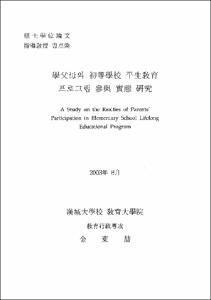學父母의 初等學校 平生敎育 프로그램 參與 實態 硏究
- Files in This Item:
-
-
Download
 000000066421.pdf
기타 데이터 / 3.08 MB / Adobe PDF
000000066421.pdf
기타 데이터 / 3.08 MB / Adobe PDF
-
Items in Repository are protected by copyright, with all rights reserved, unless otherwise indicated.
 000000066421.pdf
기타 데이터 / 3.08 MB / Adobe PDF
000000066421.pdf
기타 데이터 / 3.08 MB / Adobe PDFItems in Repository are protected by copyright, with all rights reserved, unless otherwise indicated.